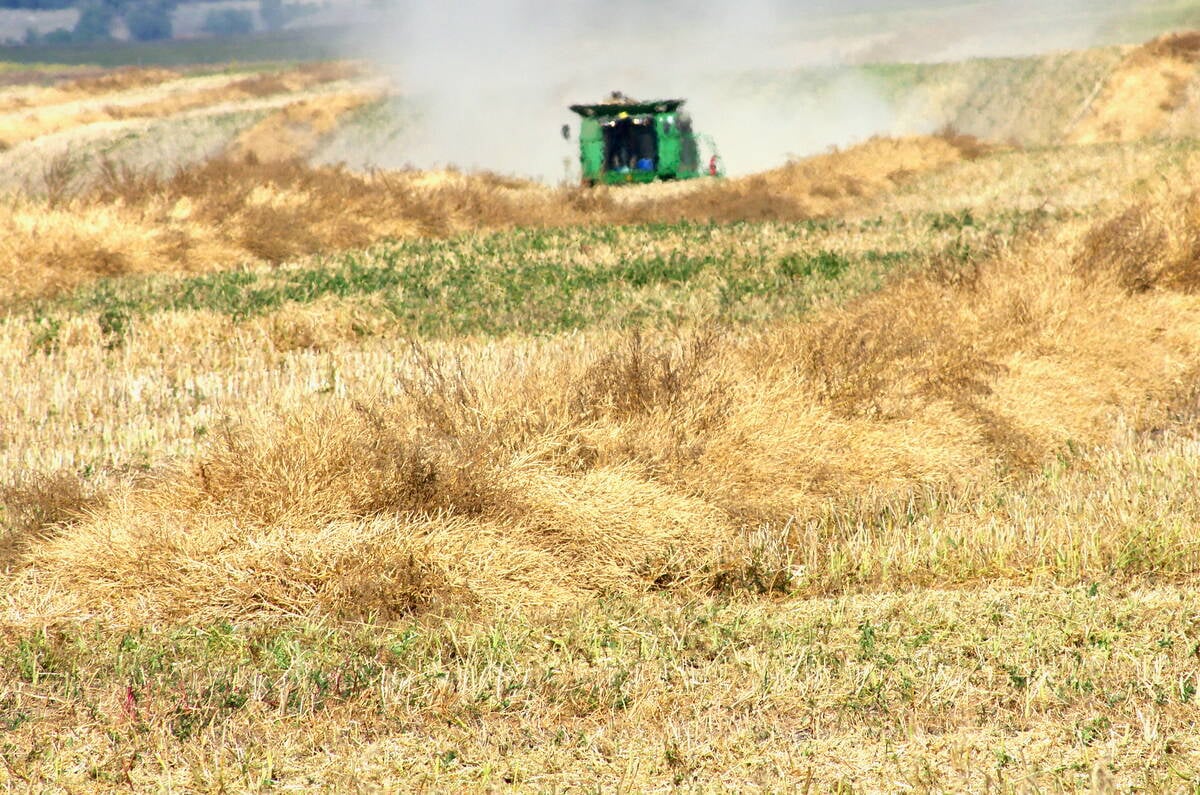TURTLE LAKE, Sask. – Look up, look way up. Higher than average snow accumulations are putting farm buildings at risk this winter.
High snowfalls and sustained cold are blamed for the collapse of a 17-year-old quonset shed on a farm in northwestern Saskatchewan recently.
“We thought other farmers should know that their sheds might be in danger too,” said Darlene Hamm of Turtle Lake. “We never thought ours would fall down with two feet of snow on it. But it did.”
Hamm and husband Wilfred were shocked to find that their shed had collapsed onto their farm implements and vehicles.
Read Also

Manitoba searches for Plan B on canola oil exports
A new report explores Manitoba’s current canola oil trade and possible alternative markets to the U.S.
“We didn’t know anything like this could happen with this design of building,” said Wilfred Hamm of his 50 by 100 foot machinery shed.
“When they sold it to us they warned us that we’d better like the location because it would be there for the rest our lives and our children’s too. We’re still here. The shed, well, not so much.”
He said more snow than normal had accumulated on top of the shed this winter, with 50 centimetres of snow sitting on the roof by the time the building collapsed.
And the snow has kept coming.
Environment Canada said snowfall in Western Canada is above and below normal this year, depending on location.
Where the Hamms live, east of Lloydminster and south of Meadow Lake, Sask., the snow has been above average.
Darlene Hamm said the lack of warm days and sunshine kept snow from sliding off the arched building as it normally would.
The weight of snow depends on its crystal structure, according to the University of Minnesota agricultural extension department. It recommends loads shouldn’t exceed 25 to 30 pounds per sq. foot in that state.
Every region of North America has an individual snow load recommendation or regulation for engineers and architects to follow because each area receives different snow, rain and wind loads.
The National Research Council in Canada estimates that snow weighs about two grams per cubic centimetre or 12 lb. per cubic foot.
Snow loading is calculated based on the building’s design, which means there are too many variables to express an average snow load requirement, said Doug Sanders of the fire commissioner’s office in Saskatchewan.
However, farm buildings in Western Canada are exempt from building codes.
“There is a recommended code that most architects and engineers follow,” he said.
Terry Focht, who owns ZipperLock Buildings in Raymore, Sask., said farmers need to insure their buildings against loss.
The Hamms didn’t list their quonset on their insurance policy, in large part, they said, because when they built the building in 1989 the manufacturer told them it was fire and wind proof, and few farmers insured the structures for that reason.
Focht said it is rare that a building collapses under snow.
“Farmers should consider carefully removing large buildups of snow if it is an unusual amount,” he said.
Wilfred Hamm said he didn’t think the building collapse was possible.
“I really couldn’t conceive of anything happening to a steel building like that one. It’s top of the line. There is no warranty on an older building, no insurance and no shed,” he said.
Environment Canada reminds producers that some of the heaviest snowfalls in the West can come in March and April.
Hamm said his brand of shed isn’t unique.
“Ours was one of the best and it fell down. It can happen to any building. I just hope it doesn’t happen when someone is inside.”














